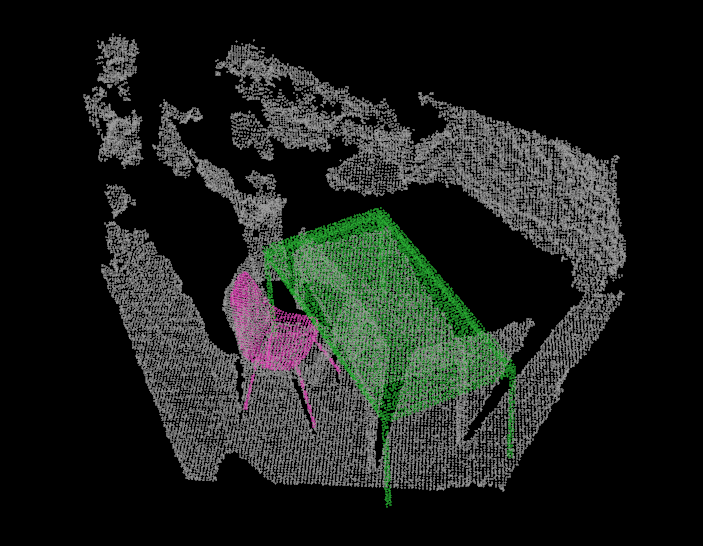Only released in EOL distros:
Package Summary
furniture_classification
- Author: Vladyslav Usenko
- License: BSD
- Source: git http://code.in.tum.de/git/mapping.git (branch: None)
Package Summary
furniture_classification
- Author: Vladyslav Usenko
- License: BSD
- Source: git http://code.in.tum.de/git/mapping.git (branch: None)
Contents
Description
This package provides tools to recognize and classify furniture in Kinect captured scenes using user provided CAD models. The process consists of generating pointclouds from mesh models, training classifier using generated data and classifying furniture in a scene. The approach is described in the paper by Mozos and Marton, Furniture Models Learned from the WWW -- Using Web Catalogs to Locate and Categorize Unknown Furniture Pieces in 3D Laser Scans.

Install
Electric
You need perception_pcl_electric_unstable stack to run this code. First check out perception_pcl_electric_unstable in some directory on your computer.
$ svn co http://svn.pointclouds.org/ros/branches/electric/perception_pcl_unstable/
Add the directory where you downloaded perception_pcl_electric_unstable to the beginning of ROS_PACKAGE_PATH. You can do it by adding this line to ~/.bashrc
ROS_PACKAGE_PATH=/your_install_dir:$ROS_PACKAGE_PATH
Then build pcl by running rosmake in perception_pcl_electric_unstable directory.
You also need to download mapping stack into a directory, which is in your ROS_PACKAGE_PATH and build furniture_classification package.
$ git clone -b electric http://code.in.tum.de/git/mapping.git $ rosmake furniture_classification
Fuerte
You need pcl17 package to run this code. First check out perception_pcl_unstable in some directory on your computer.
$ svn co http://svn.pointclouds.org/ros/branches/fuerte/perception_pcl_unstable/
Add the directory where you downloaded perception_pcl_unstable to the beginning of ROS_PACKAGE_PATH. You can do it by adding this line to ~/.bashrc
ROS_PACKAGE_PATH=/your_install_dir:$ROS_PACKAGE_PATH
Then build pcl17 by running
$ rosmake pcl17
You also need to download mapping stack into a directory, which is in your ROS_PACKAGE_PATH and build furniture_classification package.
$ git clone http://code.in.tum.de/git/mapping.git $ rosmake furniture_classification
Usage
First create a directory where you want to save results and cd to it. After that run following commands:
$ rosrun furniture_classification scan -input_dir `rospack find furniture_classification`/data/models/ -output_dir scans/ -height 3 -noise_std 0.07 -distance 4 -tilt -30 -shift 0 -num_views 12
This executable generates partial view pointclouds for CAD models stored in data/models/ and saves them into scan folder. Expected directory stucture is Class_Name/Model_Name.vtk (Example: Chairs/Big_Chair.vtk)
$ rosrun furniture_classification train -input_dir scans/ -output_dir database/ -num_clusters 40 -features sgf
This executable generates classifier database from partial view scans found in scans/ folder and saves it to database.yaml
$ rosrun furniture_classification classify -database_dir database/ -scene_file_name `rospack find furniture_classification`/data/test/scenes/chairAndDesk1.pcd -features sgf
This executable finds and classifies furniture in a scene specified using classifier from database.yaml. Result is stored in scene_name/result/ (in this case chairAndDesk1/result/)
You can view result by executing
$ rosrun pcl pcl_pcd_viewer chairAndDesk1_debug/Scene0.pcd chairAndDesk1_result/*

You can also try live version if you have Kinect.
First start Kinect
$ roslaunch openni_camera openni_node.launch
Then run classify_live executable. Point your Kinect to a scene. In the scene the floor should be visible, because it is used for alignment. Press 'c' to start classification process.
$ rosrun furniture_classification classify_live -database database/ -features sgf
